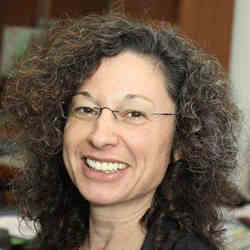
Introduction
Higher education today faces many challenges, including financial and the recognition that alongside professional core knowledge, skills should also be acquired as part of the degree. It is, therefore, time to consider a suitable economic model that not only provides students with such additional skills, but whose budget load is almost zero. As I will illustrate in this blog, such a model is plausible and, furthermore, enables the university to exploit its strengths and resources more inclusively, express agility, increase its impact, and create a network of stakeholders from the ecosystem of science and engineering that will ensure the program's sustainability.
The model
The proposed model may guide academic organizations when considering the establishment of new educational programs. It suggests that programs can sometimes be launched and operated successfully without additional investments, based on the utilization of existing resources, while at the same time better fulfilling their targets.
Programs that apply this model address both social and individual needs; focus on imparting professional skills, in addition to excellent professional knowledge (described by the recently coined term Credegree (Busteed, 2019)); utilize existing university resources that represent its strengths, without (almost) any other internal or external resources; and create multi-level win-win situations for many stakeholders – both within and outside of the university: individual students, faculty members, the university, the industry, and the state.
I will illustrate the model using two undergraduate science and engineering programs offered by the Technion – Israel Institute of Technology, which ranks among the top 100 universities worldwide (Academic Ranking of World Universities). Ten thousand undergraduate students study at the Technion in 17 academic units (called faculties) and Technion graduates fill many leading positions in the Israeli industry, contributing significantly to Israel's economic growth.
The two programs – Views and #Ladders – were initiated by the author of this blog while serving as a faculty dean (Views in 2011) and as Dean of Undergraduate Studies (#Ladders in 2017). Views addresses the need for qualified high school STEM teachers (see Hazzan, 2014) and #Ladder addresses the work-study conflict that many undergraduate science and engineering students experience (Hazzan and Levontin, 2018). Existing resources were used for both programs, and their actual cost was (almost) zero.
Table 1 summarizes the main characteristics of Views and #Ladders and Table 2 shows how Views and #Ladders create a win-win situation for many stakeholders.
Table 1: Main characteristics of Views and #Ladder
|
Characteristic |
Views |
#Ladders |
|
Meaning of program name |
Views is the abbreviation, in Hebrew, of Engineers/scientists in Science and Technology Education. |
The source of the name #Ladders is the dual career ladder concept used in the industry, which reflects the option of ascending the organization hierarchy by either climbing the managerial ladder or the technical ladder. Accordingly, the #Ladders program offers the opportunity to pursue a career in either the academia or the industry. The # (hashtag) is used as a graphic representation of a ladder; in Hebrew, this symbol is called "sulamit", which means a small ladder. |
|
Motivation |
|
|
|
Target population |
|
|
|
Target |
|
|
|
Implementation |
|
|
|
Individual need addressed |
|
|
|
Number of students/graduates |
|
|
|
Existing resources utilized |
|
|
|
Actual (almost-zero) cost |
|
|
Table 2: Multi-level win-win situation for all stakeholders
|
#Ladders |
Views |
Program Stakeholder |
|
|
Students and alumni |
|
|
Faculty members / Lecturers |
|
|
Technion |
|
|
Industry |
|
|
State |
Summary
My focus in this blog was on a science and engineering research university. This environment is meaningful since the industry, one of the major future employers of science and engineering research university graduates, is one of the stakeholders that benefits from the presented model, due to its need for qualified employees in these domains. This need is a result of the rapid changes in the world in general, and in the tech industry in particular, as expressed in the current 4th industrial revolution. Application of this model in other domains should be investigated as well.
References
Busteed, B. ,(2019). Why College Will Soon Be About Credegrees And Co-Ops, Forbes https://www.forbes.com/sites/brandonbusteed/2019/03/11/why-college-will-soon-be-about-credegrees-and-co-ops/#266152453159
Hazzan, O. (2014). A proactive approach to high school STEM education in Israel, Tomorrow's Professor eNewsletter 1337, https://tomprof.stanford.edu/posting/1337
Hazzan, O. and Binah-Pollak, A. (2020). Exposure to Research in Science and Engineering Undergraduate Studies, Tomorrow's Professor eNewsletter 1794, https://tomprof.stanford.edu/posting/1794
Hazzan, O. and Levontin, L. (2018). Study-work conflict in science and engineering higher education, Tomorrow's Professor eNewsletter 1674, https://tomprof.stanford.edu/posting/1674
Plummer, J. (2013). Educating engineers and scientists for the 21st century. JUNBA 2013. http://docplayer.net/13848999-Educating-engineers-and-scientists-for-the-21st-century.html
Orit Hazzan is a professor at the Technion’s Department of Education in Science and Technology. Her research focuses on computer science, software engineering, and data science education. For additional details, see https://orithazzan.net.technion.ac.il/ .



Join the Discussion (0)
Become a Member or Sign In to Post a Comment